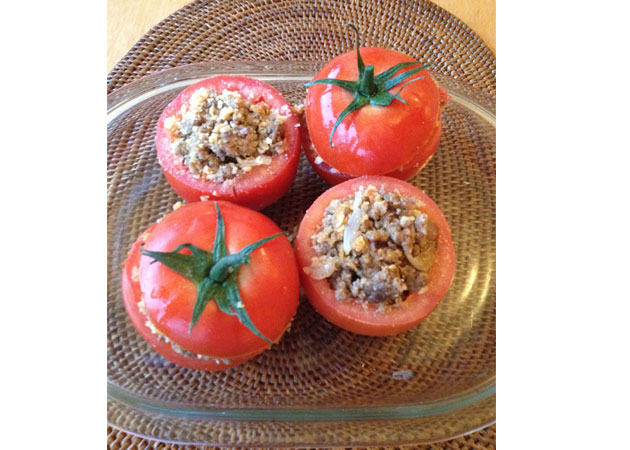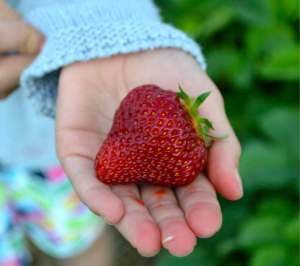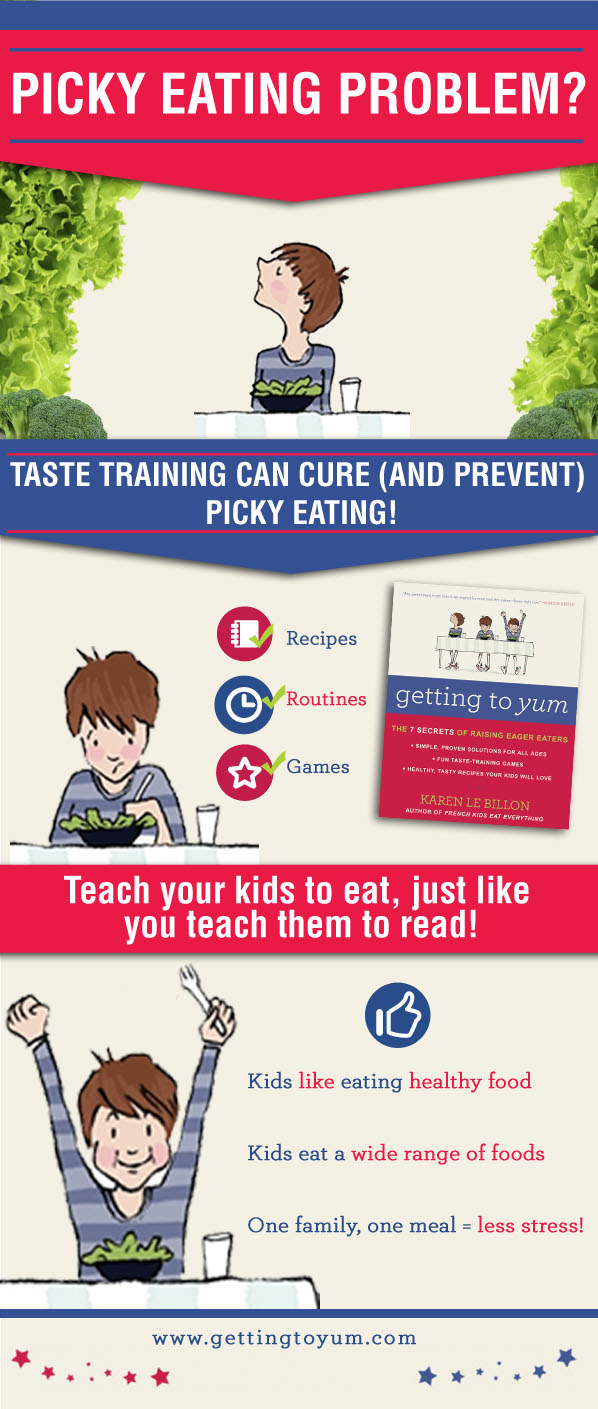 France has one of the lowest rates of child obesity in the developed world, and is the only country in which child obesity rates have remained stable in the past decade, in stark contrast to the rapidly rising rates elsewhere. In fact, American kids are three times more likely to be overweight than French children. And while child obesity rates are rising quickly in many countries, they have remained unchanged in France for over a decade. Why?
France has one of the lowest rates of child obesity in the developed world, and is the only country in which child obesity rates have remained stable in the past decade, in stark contrast to the rapidly rising rates elsewhere. In fact, American kids are three times more likely to be overweight than French children. And while child obesity rates are rising quickly in many countries, they have remained unchanged in France for over a decade. Why?
It’s certainly not because the French know more about nutrition than we do. A survey earlier this year revealed that the French know much less about basic nutrition than we do (for example, 40% of French people didn’t know the fat content of whole milk, versus 4% of Americans).
The French are also less anxious about food than Americans, as Paul Rozin (a University of Pennsylvania psychologist) and Claude Fischler (a French sociologist) found out when they collaborated on a series of cross-cultural surveys. Of the four countries surveyed (the US, France, Japan, and Belgium), the US stood out: Americans tend to associate food with health, not with pleasure, and worry more about food than people in any other nation surveyed. When shown a picture of a chocolate cake, the most frequent responses from Americans were ‘guilt’, and ‘calories’. The French response: ‘celebration’ and ‘pleasure’. The French associated a picture of ‘heavy cream’ with the word ‘whipped’, whereas the Americans described it as ‘unhealthy’.
This ‘pleasure principle’ complicates an already heated debate about the ‘French paradox.’ In a nutshell: French adults spend twice as much time as Americans eating, and they consume dairy and meat products in large quantities, yet are less overweight or obese, and have lower rates of heart disease than Americans. Various explanations have been offered: smaller food portions, less snacking, cigarette smoking (although rates have declined substantially in recent years), and red wine consumption. Whatever the explanation, this seemingly unfair fact of life is unchanged: the French, it seems, can truly have their cake and eat it too.
 The way French kids eat is equally paradoxical. French children spend one hour more per day eating than American kids do, partly at the expense of ‘screen time’ (they get, on average, 2 hours less per day). In the ‘classic’ French household (and I’m aware I am over-generalizing here), children eat the same food the adults do-and are expected to do so uncomplainingly. The (admittedly anecdotal) proof can be found in the lunches served in French schools every day: French school children regularly eat things like radishes, grated carrot salad, endive, all sorts of fish, and even stinky blue cheese and grilled guinea fowl (see the amazing school lunch menus I documented for a year in French communities of all sizes at the French Kids School Lunch Project).
The way French kids eat is equally paradoxical. French children spend one hour more per day eating than American kids do, partly at the expense of ‘screen time’ (they get, on average, 2 hours less per day). In the ‘classic’ French household (and I’m aware I am over-generalizing here), children eat the same food the adults do-and are expected to do so uncomplainingly. The (admittedly anecdotal) proof can be found in the lunches served in French schools every day: French school children regularly eat things like radishes, grated carrot salad, endive, all sorts of fish, and even stinky blue cheese and grilled guinea fowl (see the amazing school lunch menus I documented for a year in French communities of all sizes at the French Kids School Lunch Project).
Most astonishing of all (as I can attest, being married to a Frenchman, and having our two daughters attend school in France): French kids not only eat this food, most of them like it.
Why? In part, it’s because French school lunches are used as a pedagogical tool, introducing a broad range of dishes, fresh vegetables, and fruits. Strict Ministry of Education regulations ensure that fried food is served no more than once per month, children drink only water at lunch; instead of flavored milk, traditional cheeses or yogurts are served. Ketchup is served a maximum of once per week-and only with foods with which it is traditionally used as a condiment, such as steak. Portion sizes are limited (one piece of delicious baguette per child, at my daughters’ school). And vending machines are banned in all schools. Yes, that means no soda pop, no processed food, and no fast food. Kids learn to like the taste of ‘whole food’. This doesn’t mean deprivation, but rather moderation: sweet treats (like Cherry Clafoutis in cherry season, or Chocolate Mousse) are served once a week. So French kids learn to ‘treat treats as treats’, to use Michael Pollan’s phrase.
The French example suggests that part of the answer to our obesity epidemic lies in food culture: the routines, rules, and rituals through which we teach our children how and why (as well as what) to eat. French teachers and parents believe that children can be taught to eat—just like they are taught to read. And they believe that this is one of the most important skills acquired in early childhood. So they have a series of teaching tools and techniques, built into common-sense routines, that they use at home and at school, to teach children to eat well.
 I summed these up in my book French Kids Eat Everything as the ’10 French Food Rules’: healthy eating routines which govern how as well as what French children (and adults) eat.
I summed these up in my book French Kids Eat Everything as the ’10 French Food Rules’: healthy eating routines which govern how as well as what French children (and adults) eat.
Take, for example, French Food Rule #7: No random snacking. French government policy and pediatric advice are clear: children should eat three meals per day, plus one scheduled afternoon snack (the goûter). TV ads for snack foods even carry health warnings (like cigarettes here)! In the US, the increase in snacking over the past 3 decades-from an average of once per day in the 1970s to three times per day currently-is associated with an increase in caloric intake (and hence with higher obesity rates). Snacking has also increased in France, but is still much more rare than in North America.
Of course, many other factors are relevant to a discussion of obesity: poverty (France has one of the lowest poverty rates in the G8) and food insecurity, exercise rates, food deserts, genetics, and obesogenic chemicals. But how much we eat is undoubtedly a factor (scientists term this a ‘positive energy balance’: too many calories in, and too few calories out).
For example, French parents ask their children: “Are you still hungry?” rather than “Are you full?” — a subtle, but important distinction. And because they don’t randomly snack, French children get used to waiting between meals. They learn that that it’s OK to have a comfortably empty stomach—which enables them to eat reasonable quantities of the energy-dense foods served at mealtimes, so they don’t feel hungry until the next meal—creating a virtuous cycle.
And here’s French Food Rule #6:’You don’t have to eat it, but you do have to taste it’. Research has shown that children have to taste new foods at least 7 times (on average) before they will accept to eat them; and further tasting is necessary before they’ll learn to like them. Knowing this, French parents are enabled to teach kids to love the tastes of ‘good-for-you’ foods (rather than telling our children that ‘good-for-you’ food tastes bad and then forcing them to eat it). Although they love fries and pizza as much as any kid, French kids also learn to like ‘healthy foods’.
I saw the transformative effect of this Food Rule with my own daughters: picky eaters when we moved to France several years ago, they soon learned to love foods like spinach. The younger one (now 4) loves Roquefort. The older one loves mussels and sardines. Quite the change from the ‘beige food’ diet they were used to back in North America. (It was so inspiring that I unexpectedly became an author and a somewhat accidental food activist!)
Of course, we didn’t do it on our own. My children were taught to learn how to eat, and thus to grow out of the picky eater phase, through ‘tasting lessons’ at school, food lessons in the curriculum, a school garden and varied school lunch menus (combined with positive peer pressure – as all of the children eat the same thing, and no one brings lunch from home). A two-hour lunch break ensured the French students had enough time to eat their four-course, freshly prepared meal properly, and then play—so they were recharged for the afternoon. Food was the highlight of the day; often, the first thing parents would ask at pick-up was: ‘How did you enjoy your lunch’ today?
So French schools support parents in teaching children about healthy food culture—whereas here at home, it often seems like the opposite is true. And a range of other measures –incentives for fruit and vegetable producers, food industry regulation (including a soda tax), and controls on food marketing to children – are also in place.
Of course, the French approach is not perfect. School lunches vary in quality, for example-and aren’t reflective of the country’s ethnic diversity (particularly when it comes to kosher and halal foods). And as in other countries, obesity rates are higher amongst low-income groups, and the gap is widening.
Nonetheless, we can learn from the French approach to child obesity, for at least four reasons.
1. The French take a positive rather than punitive approach to food—teaching their children to love healthy food. This doesn’t mean that there aren’t picky eaters in France (of course there are!). But many pass through the ‘picky eater’ phase more quickly, and so are better equipped to make the right food choices—about how much as well as what to eat. Note: some research, like that of Brian Wansink at Cornell, suggests that providing children with extensive nutritional education is not sufficient to enable them to consistently make healthy food choices. Nutritional education is important, but the French ‘pleasure principle’ is different: French kids (and adults) aren’t learning to eat healthy food because they have to, but rather because they enjoy it, and because it’s part of a routine they’ve followed since early childhood.
2. The French have taken a comprehensive approach to preventing child obesity-including many initiatives that medical professionals have long been demanding in the US. And this has measurable effects. Many of the policies describe above have only been in place over the past decade—initiated when the French government became alarmed by an increase in child obesity rates (albeit low by international standards). Since then, child obesity rates have leveled off.
3. Government support is crucial, but the French approach to food education is not solely top-down or government-led. French school lunches, for example, are entirely funded by local municipalities (there are no national subsidies, unlike in the US). Social solidarity within communities enables this to work; for example, income-related cross-subsidies between families ensure that all kids have access to the same healthy meals—so that middle-class families in Paris pay $3 per meal, but lower-income families pay only 20 cents. Policy change (revising SNAP, the Farm Bill, and the National School Lunch Program) is important – but so is bottom-up change, teaching kids (and their parents) to demand healthy food, and creating the conditions in which they can organize themselves to provide it. Luckily, we have great examples here at home: like Chef Kate’s ‘Cook for America’, which shows schools how to save money and improve lunches by scratch cooking ‘real food’ meals.
In response to the often divisive American debate over whether ‘government’ versus ‘personal responsibility’ matters-the simple answer is: both.
4. Finally, while healthy eating starts in the home, food education should also be part of the school curriculum. Food can be integrated into everything from science to social studies. ‘Taste Training’ lessons start in kindergarten in France, and culminate in Grade 4 with a ‘Tasting Week’ (complete with certificate!). There are lots of great local initiatives across North America (including Project Chef in Vancouver, where we now live), but these are ad hoc and often under-funded. What about supporting and replicating these initiatives, or celebrating Food Day in American schools?
These strategies might not be the solution to our obesity epidemic, but (properly adapted) they might be part of a solution. Admittedly, change in schools and government policy won’t happen overnight. In the meantime, however, parents can accomplish a great deal by applying the ‘French Food Rules’ at home – and creating their own family food revolution.
Bio: Karen Le Billon is a Professor and Chair at the University of British Columbia. A Rhodes Scholar with a PhD from Oxford University, she was named one of Canada’s Top 40 under 40 in 2011. Her work has been featured on Good Morning America, the New York Times, the Sunday Times, the Toronto Star,Dissent, the Globe and Mail, and the Independent. The author of French Kids Eat Everything(HarperCollins 2012) and a Real Food Advocate for the Jamie Oliver Foundation, Le Billon blogs on France, food, and parenting at FrenchKidsEatEverything.com.
References
[1] Data Source: International Obesity Task Force: http://www.iaso.org/publications/world-map-obesity/?map=children
[2] Saulais, L. et. Al. (2012) « Consumer knowledge about dietary fats: Another French paradox?” British Food Journal114(1), 108-120.
[3] P. Rozin, C. Fischler, S. Imada, A. Sarubin, and A. Wrzesniewski, “Attitudes to Food and the Role of Food in Life in the U.S.A., Japan, Flemish Belgium and France: Possible Implications for the Diet–Health Debate,” Appetite33 (1999): 163-180.
[4] Fischler, C.
[5] Neilsen (2012) “State of the Media Trends in TV Viewing—2011 TV Upfronts”
• Kaiser Family Foundation (2012) “Generation M2: Media in the lives of 8 to 18 year olds.”
• Eurodata TV Worldwide (2012) “Kids’ TV Trends”
• Insee, enquête Emploi du temps 2009-2010.
• Strasburger VC, et al “Policy statement — Children, adolescents, obesity, and the media” Pediatrics 2011; 128: 201–208.
This blog post was originally an invited article on NewYorkInFrench.net
Like this:
Like Loading...
 Grated carrot salad is a favorite dish for French kids. They eat it regularly for school lunch, and it’s popular at home as well. Even adults enjoy it as a starter. As a testament to its popularity, you can even find grated carrot salad pre-packaged in supermarkets (as one of the few salads which you can buy pre-prepared).
Grated carrot salad is a favorite dish for French kids. They eat it regularly for school lunch, and it’s popular at home as well. Even adults enjoy it as a starter. As a testament to its popularity, you can even find grated carrot salad pre-packaged in supermarkets (as one of the few salads which you can buy pre-prepared). Carrots: Peel the carrots. This is important, because the skin is often more bitter than the interior! Grate the carrots in fine shreds using a hand grater or machine. (These food mills are popular in France, and make fine, delicate shredded carrot—if you have one, use it!) The finer the strands, the more delicious the salad.
Carrots: Peel the carrots. This is important, because the skin is often more bitter than the interior! Grate the carrots in fine shreds using a hand grater or machine. (These food mills are popular in France, and make fine, delicate shredded carrot—if you have one, use it!) The finer the strands, the more delicious the salad.






